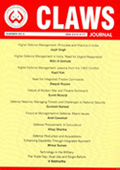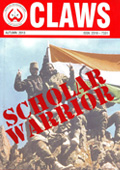|
India’s relations with Afghanistan have considerably improved in the post-Taliban period. Political, strategic, security, and economic dimensions remain dominant aspects in ties between the two countries. Besides political, strategic, and security cooperation, India’s economic assistance is one of the major factors in growing relations between India and Afghanistan. Economic assistance can be used as a tool in achieving India’s politico-military and foreign policy objectives. India’s presence in Afghanistan has increased as a result of its economic assistance. Pakistan looks at Indian investments with much concern.
India and Pakistan share historical and cultural ties with Afghanistan but for decades had been competing for ‘strategic depth’ there. For India, Afghanistan is an important locus to contain Pakistan and is also the gateway to Central Asia. Pakistan views Afghanistan as a source of insecurity, a source of fuel for Pashtun separatism inside Pakistan. Pakistan also views Afghanistan as a source of ‘strategic depth’ against an Indian threat. While Pakistan has failed in its illusionary policy of ‘strategic depth’ in Afghanistan, India is gaining broad and deep influence there. India’s investments of $750 million and its dominance of every economic sector of Afghanistan will give it a long lasting influence in Afghanistan. Pakistan’s Taliban connection would not much help in balancing Indian influence.
India is involved in construction of roads, buildings, schools, and hospitals. It has constructed the 218-km Zaranj-Delaram highway to use as an alternative for Indo-Afghan trade. Besides building the Afghan Parliament, India has donated three Airbus aircraft to Ariana, the Afghan national airline, 400 buses for public transportation, and 105 vehicles for the Kabul municipality. India has also invested in several power generation projects, including a solar plant for the electrification of a hundred villages. In the field of communications, India has been of sterling service to Afghanistan. India has set up a modern TV studio, a 1000W TV transmitter in Jalalabad, and is establishing a mobile TV satellite uplink and five TV relay centres in Nangarhar province. In addition, India has leased out a slot on its INSAT 3A satellite for RTA transmissions since 2004.
India has built hundreds of schools and is providing teachers throughout Afghanistan. It has also built the Maulana Abulkalam Azad Block for the Hindi and English language Departments of the Languages and Literature College at Nangarha University.
India has also provided significant amount of food aid to Afghanistan. Indians have taken over several public service functions like the postal service and electricity distribution. India’s presence in the Afghan economy is so comprehensive that it would be almost impossible for crisis-ridden Pakistan to pose even a modest challenge. Thus, India’s role in the construction has exemplified its soft power.
India’s economy is large and has huge foreign exchange reserves. Therefore, it can afford to invest a few billion dollars to achieve its politico-military and foreign policy objectives. In contrast, the Pakistani economy is small, and has been stagnating or shrinking despite claims of positive growth. Moreover, with a civil-war like situation in the country, Pakistan cannot compete with India in Afghanistan. It is universally true that economic domination is the most powerful instrument. The US, and before that Britain, dominated the world because of their economic superiority. Pakistan cannot compete with Indians in providing services and goods to Afghanistan.
However, Pakistan has a certain potential edge over India because of the Pashtun living on both sides of the border. Pakistan will play the Pashtun card differently than it has done in the past. Instead of seeking control over Kabul through a Pashtun force, religious or otherwise, Pakistan will consolidate its own Pashtun area, bordering Afghanistan.
Pakistan-Afghanistan strains have made a Pakistani role with Afghan security impossible. India has offered security assistance and provided some training to the Afghan national army. In Afghanistan, the coalition forces seek a decisive breakthrough not so much because of the human losses but because of the economic loss that affects the US economy and the rising levels of discontents in the US and European Union (EU) against the continuing fighting. Economic drain and the growing discontents in the US and EU may be factors for the exit of the coalition forces from Afghanistan. After exit of the coalition forces, India’s presence is likely to increase.
In August 2009 presidential election in Afghanistan, Karzai has fought a tough battle against Abdullah Abdullah, the main opposition candidate and former minister in the Karzai government. The 2009 presidential outcome is difficult to predict because of poll irregularities and both Hamid Karzai and Abdullah Abdullah have claimed victory. If Karzai wins the election, politico-administrative arrangements will not change in Afghanistan. In case of Abdullah’s win, the change in politico-administrative arrangements in Afghanistan is likely to affect India’s relation with Afghanistan. Nevertheless, India continues to employ political, diplomatic and economic means to achieve its aims in Afghanistan.
India’s engagement in reconstruction of Afghanistan has created positive perceptions among the local Afghan populace. The growing ties between India and Afghanistan have increased level of discomfort in Pakistan. India’s efforts in Afghanistan will reduce Pakistan’s manoeuvering capability. India’s economic assistance will help in achieving its politico-military and foreign policy objectives.
(Disclaimer: The views expressed in this article are those of the author and do not represent the views either of the Editorial Committee or the Centre for Land Warfare Studies).
| 

